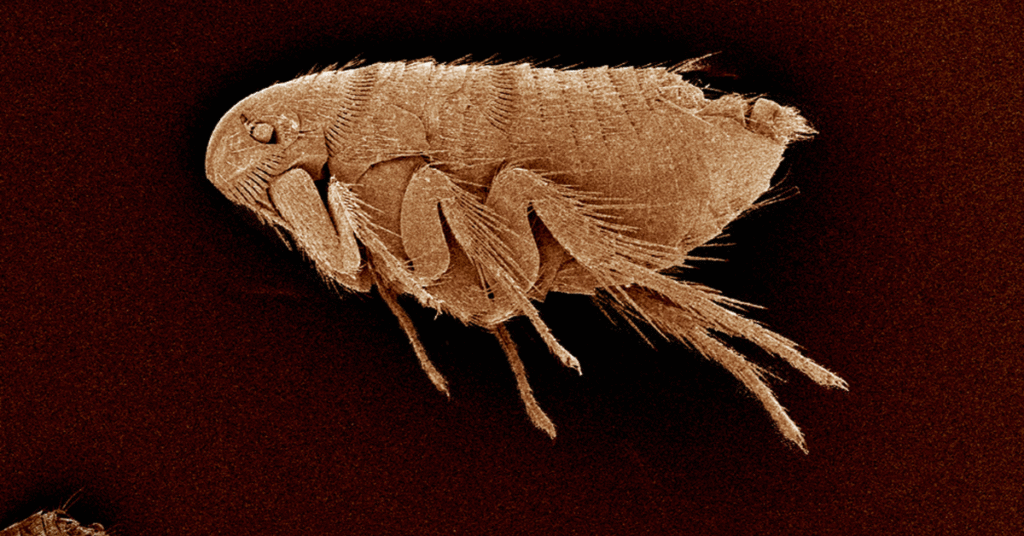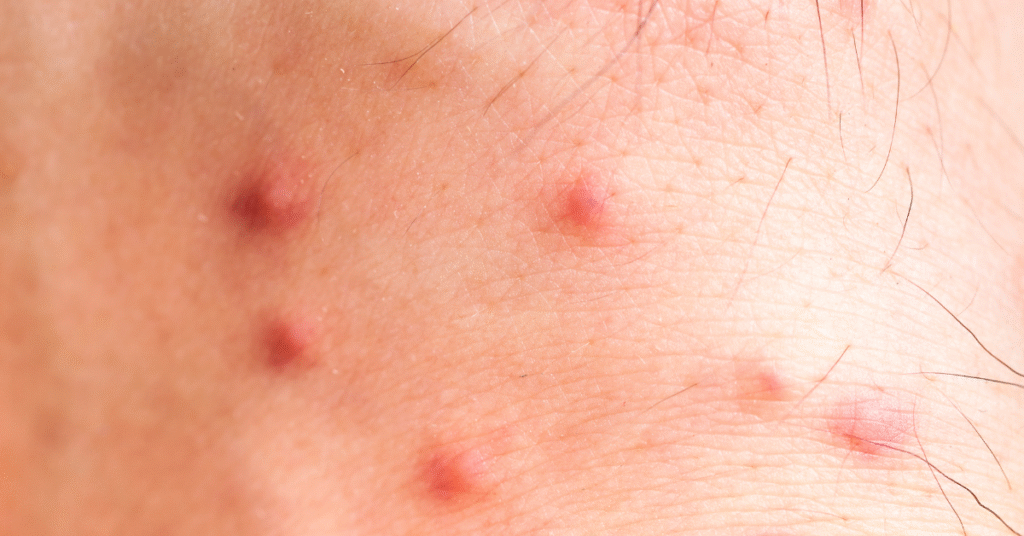Unraveling the Mystery Behind a Common Beach Term

Planning a blissful beach getaway? The thought of sand flea bites can quickly turn excitement into anxiety. But what exactly are “sand fleas”? The term is ambiguous and refers to several different animals. Some are harmless beach dwellers, while others can cause irritating bites or even serious health issues. This guide will clear up the confusion, helping you identify the creatures behind the name so you can enjoy your time by the water worry-free.
What Exactly is a “Sand Flea”? (The Confusion Explained)
When people talk about “sand fleas,” they could be referring to one of three very different types of creatures.
The Harmless Hoppers: Crustaceans (Sandhoppers, Beach Hoppers, or Mole Crabs)
These are the most common creatures people mistakenly call “sand fleas.” The good news is that they aren’t insects at all. They are crustaceans, related to crabs and shrimp. They get the “flea” name from their impressive jumping ability, which they use to escape disturbances.
- Description & Appearance: These beach hoppers belong to the order Amphipoda. They have elongated, segmented bodies and range from a few millimeters to an inch in length. Their colors include shades of brown, grey, or green. They possess long antennae and powerful hind legs for leaping. Another type, mole crabs (genus Emerita), are egg-shaped with smooth shells and are also called sand fleas.
- Habitat & Diet: You’ll find these crustaceans burrowing in moist sand between high and low tide. They also gather around piles of decaying seaweed. As scavengers, they feed on decaying plant and animal matter, playing a key role in the beach ecosystem.
- Interaction with Humans: Crucially, these crustaceans do not bite humans or suck blood. Walking over them might cause mild, temporary irritation, but they will jump away if approached.
The True Pests: Chigoe Fleas or Jiggers (Tunga penetrans)
These are the “sand fleas” you truly need to be aware of, especially when traveling. The chigoe flea (Tunga penetrans) is a parasitic insect that can cause significant health problems.
- Description & Size: Tunga penetrans is the smallest known flea, measuring only about 1 millimeter long.
- Distribution: These parasites are native to Central and South America and have spread to sub-Saharan Africa. They are extremely rare in the United States. Chigoe fleas thrive in tropical climates and sandy environments like beaches and farms with poor sanitation.
- Life Cycle & How They Bite: Only the mated female chigoe flea burrows into a host’s skin. She embeds her head, feeds on blood, and swells up to 2,000 times her size over 8 to 10 days. The flea leaves a small opening to breathe, mate, and expel hundreds of eggs. After two to six weeks, the female dies while still embedded in the skin.
- Health Impacts (Tungiasis): The burrowing flea causes a parasitic infection called tungiasis.
- Symptoms: The initial bite may be painless. As the flea swells, intense itching, pain, and redness appear. A white patch with a central black dot (the flea’s rear end) develops.
- Complications: The open lesion can lead to severe secondary bacterial infections like tetanus and gangrene. Chronic cases can cause deep ulcers, tissue death, and loss of toenails. This may lead to toe deformation and difficulty walking.
- Vulnerable Populations: Tungiasis is most common in poor, rural communities. It often affects children, older people, and people with disabilities who frequently walk barefoot.
The Annoying Biters: Sandflies (Biting Midges or “No-See-Ums”)

These are tiny, biting flies also commonly mislabeled as “sand fleas.” They are often called “no-see-ums” because they are so small they are hard to spot.
- Description & Size: Biting midges are tiny flies, usually 1-3mm long. They have one pair of wings and look more like a tiny mosquito than a flea.
- Distribution: You can find sandflies across the globe, including the Caribbean, New Zealand, and coastal areas of Australia.
- How They Bite: Only female sandflies bite to suck blood, which they need for egg development. They inject saliva to prevent clotting, and this saliva causes the allergic reaction and itchiness.
- Symptoms: Their bites leave small, red, itchy bumps that can last for up to a week. Some people have a severe reaction, resulting in swollen bites several centimeters wide. Unlike chigoe fleas, these flies do not burrow into your skin.
- Health Impacts: While their bites are irritating, there are no known diseases transmitted by biting midges to humans in Australia.
Deep Dive into the True Sand Flea (Tunga penetrans) – The One to Watch Out For
Given the potential health risks, it is vital to understand the parasitic chigoe flea more thoroughly.
The Bite and its Consequences (Tungiasis)
The consequences of a Tunga penetrans infestation range from uncomfortable to severely debilitating.
- Initial Symptoms: The flea’s burrowing might not cause immediate pain. Within a couple of days, as she grows, you will feel intense itching. A small red bump appears, which then swells and turns white with a black dot in the center.
- Progression and Complications: The pressure from the growing flea causes significant pain and can lead to ulceration. This open wound is vulnerable to bacterial infections, including dangerous ones like tetanus. Chronic infestations, especially on the feet, can cause severe inflammation, disfigurement, and nail loss. These infections disproportionately affect children and older adults in impoverished areas.
Prevention Strategies
The best defense is prevention, especially if you are in an endemic area.
- Avoid Peak Activity Times: Chigoe fleas thrive during dry seasons. They can maintain their entire life cycle indoors on dirt floors.
- Repellents: DEET-containing bug sprays are effective. Natural alternatives like coconut oil, citronella, and lemongrass oil can also act as deterrents.
- Physical Barriers:
- Wear closed-toed shoes and socks. This is the most effective way to prevent fleas from reaching your skin.
- Use a towel or chair on the beach to create a barrier between your body and the sand.
- Keep living areas clean and free of dust, which are breeding grounds for jiggers.
- Inspect your feet and exposed skin regularly for any signs of fleas.
- Environmental Control: In heavily infested areas, spraying the ground with insecticides can reduce flea populations.
Treatment Options
If a chigoe flea burrows into your skin, prompt and sterile removal is crucial.
- Sterile Surgical Extraction: The primary treatment is surgical removal with sterile tools. This should be done by a healthcare professional. Never try to remove fleas yourself with unsterilized objects like pins, as this can cause further infection.
- Wound Care: After removal, clean the wound with an antiseptic solution. Apply an antibiotic ointment and cover the area with a clean bandage.
- Medication & Vaccinations:
- Pain relief medication can help manage discomfort.
- Ensure your tetanus vaccination is up to date.
- Topical medications containing dimethicone have shown high effectiveness.
- Seek Medical Attention: If you are unsure about removal, if the infestation is severe, or if you see signs of infection, always seek professional medical help.
The Less Troublesome “Sand Fleas”: Crustaceans and Biting Midges
While the chigoe flea requires vigilance, the other creatures called “sand fleas” are less of a concern.
Crustaceans (Sandhoppers/Beach Hoppers/Mole Crabs)
These little crustaceans are harmless to humans and help keep beaches clean. They might cause a fleeting, mild itch if they land on you, but they do not bite and pose no threat.
Biting Midges/Sandflies/”No-See-Ums”
These tiny flies can be annoying, but they do not cause the severe issues associated with Tunga penetrans.
- Symptoms: Their bites are like mosquito bites—small, red, and itchy. The itching can be intense and last for days.
- Prevention: The same strategies for mosquitoes work for biting midges.
- Avoid dawn and dusk, when they are most active.
- Use insect repellents containing DEET or plant oils.
- Wear long, loose-fitting clothing to cover exposed skin.
- Use fine-mesh insect screens on windows and tents.
- Treatment for Bites: Apply an ice pack, mild antihistamine cream, or topical corticosteroids to itchy bites. Resist scratching to avoid infection.
Key Takeaways for Your Beach Adventures
When you head to the beach, remember this:
- Not all “sand fleas” are the same. Most are harmless crustaceans.
- Be vigilant about Tunga penetrans (chigoe fleas) in tropical regions of Central/South America or sub-Saharan Africa. Wear shoes and use repellents.
- Biting midges (“no-see-ums”) are irritating but less dangerous. Use repellents and avoid their peak activity times.
By understanding these distinctions and taking precautions, you can ensure your beach days remain fun, relaxing, and bite-free!
Frequently Asked Questions About Sand Fleas
What is the main difference between a “sand flea” that bites and one that doesn’t?
The main difference is their classification. Harmless “sand fleas” are actually crustaceans (like sandhoppers) that eat decaying matter. The biting “sand fleas” are parasitic insects called chigoe fleas (Tunga penetrans) that burrow into skin, or biting midges, which are tiny flies.
Can I get “sand flea disease” (tungiasis) in the United States?
Tungiasis is extremely rare in the United States. It is primarily found in tropical and subtropical regions of Central/South America and sub-Saharan Africa. Most U.S. cases involve travelers returning from these areas.
What are the most effective repellents against sand fleas and biting midges?
Repellents containing DEET are highly effective. Natural oils like coconut, citronella, lemongrass, and lemon eucalyptus also work well as deterrents against both chigoe fleas and biting midges.
What should I do if a parasitic sand flea (chigoe flea) burrows into my skin?
Seek medical attention for sterile, surgical removal. Do not attempt to remove it yourself with unsterilized tools. Afterward, clean the wound, apply antibiotic ointment, and ensure your tetanus vaccination is current.
Are the small hopping creatures I see on seaweed at the beach dangerous?
No, those are almost certainly harmless crustaceans known as sandhoppers. They feed on decaying seaweed and do not bite humans. They pose no threat to your health.




